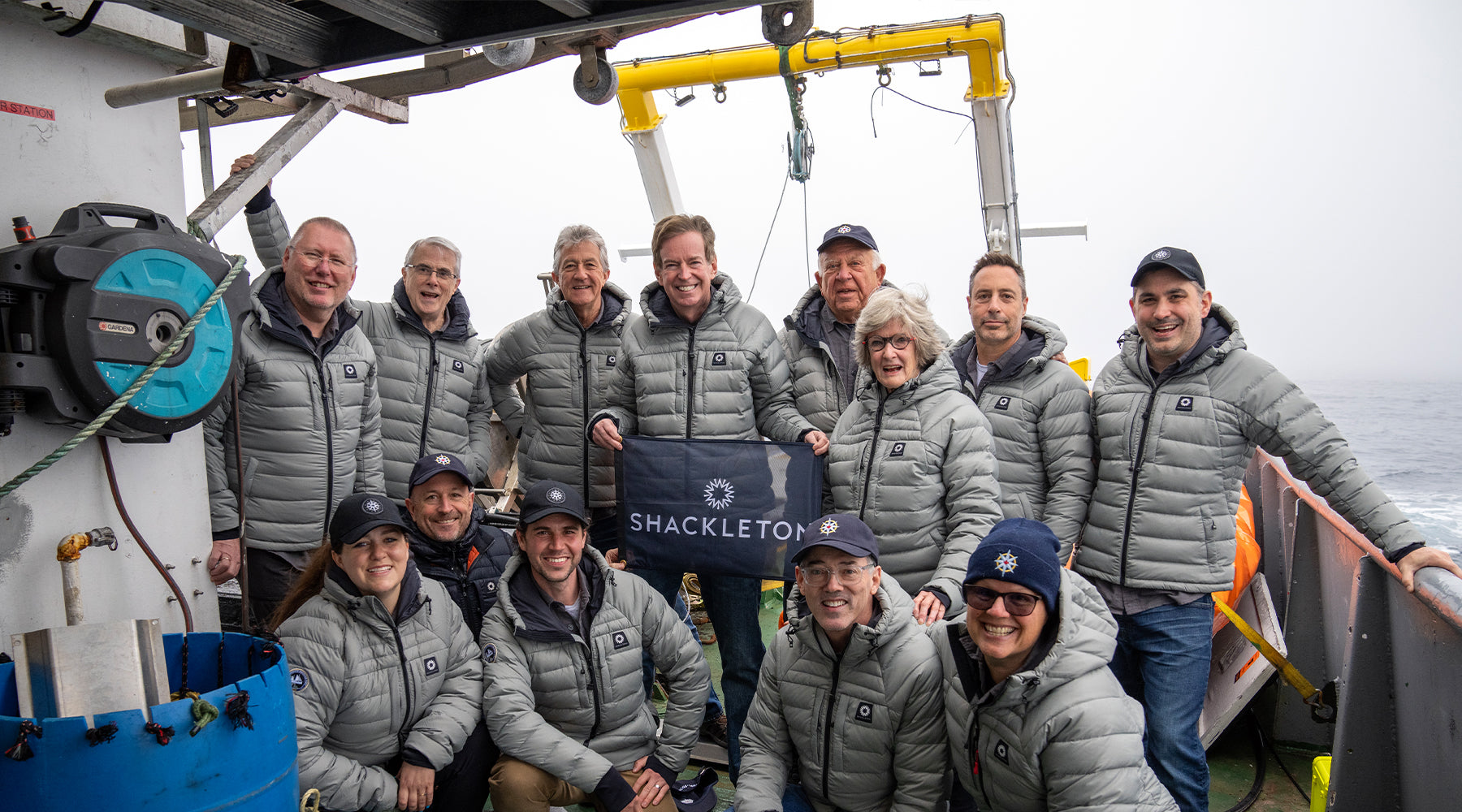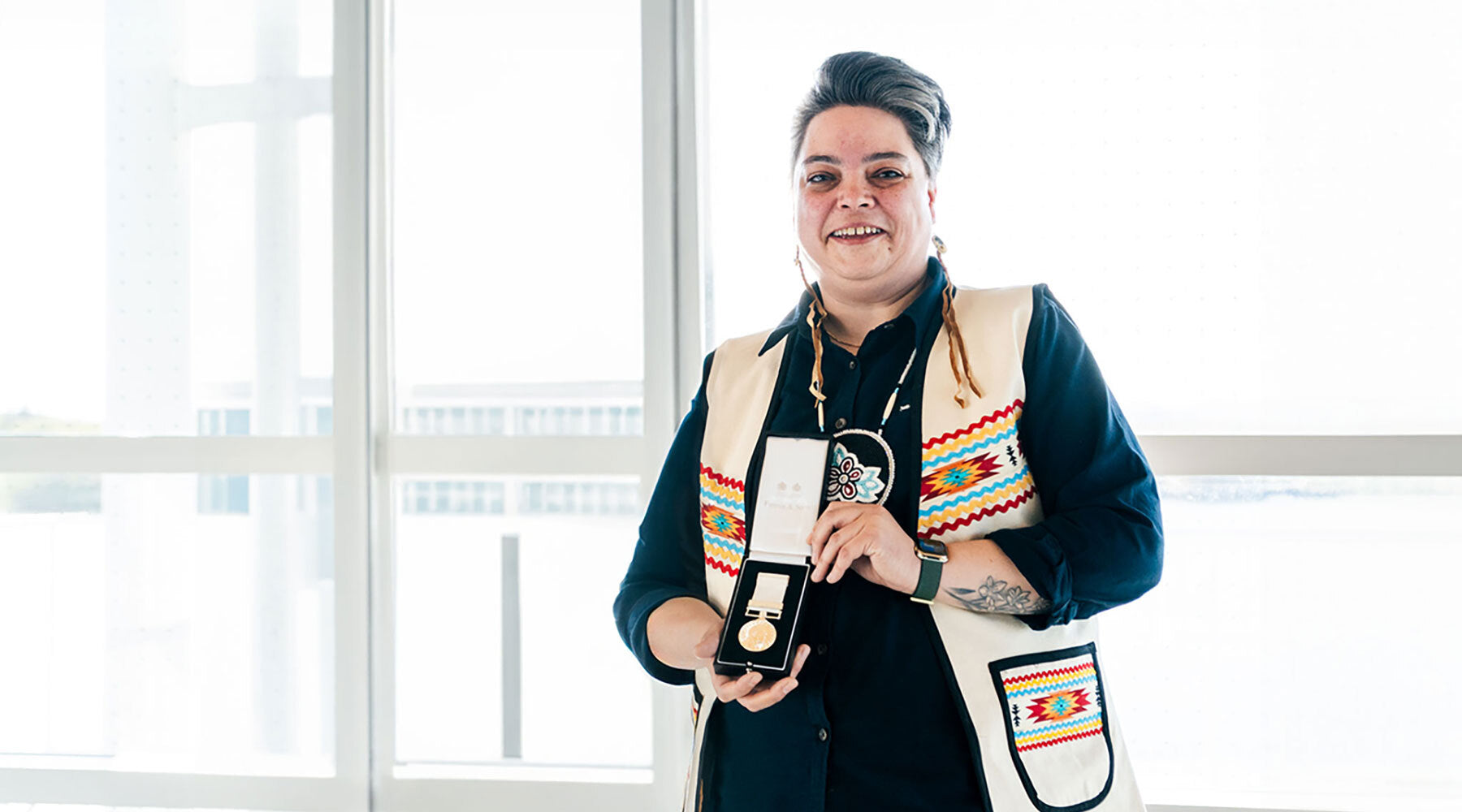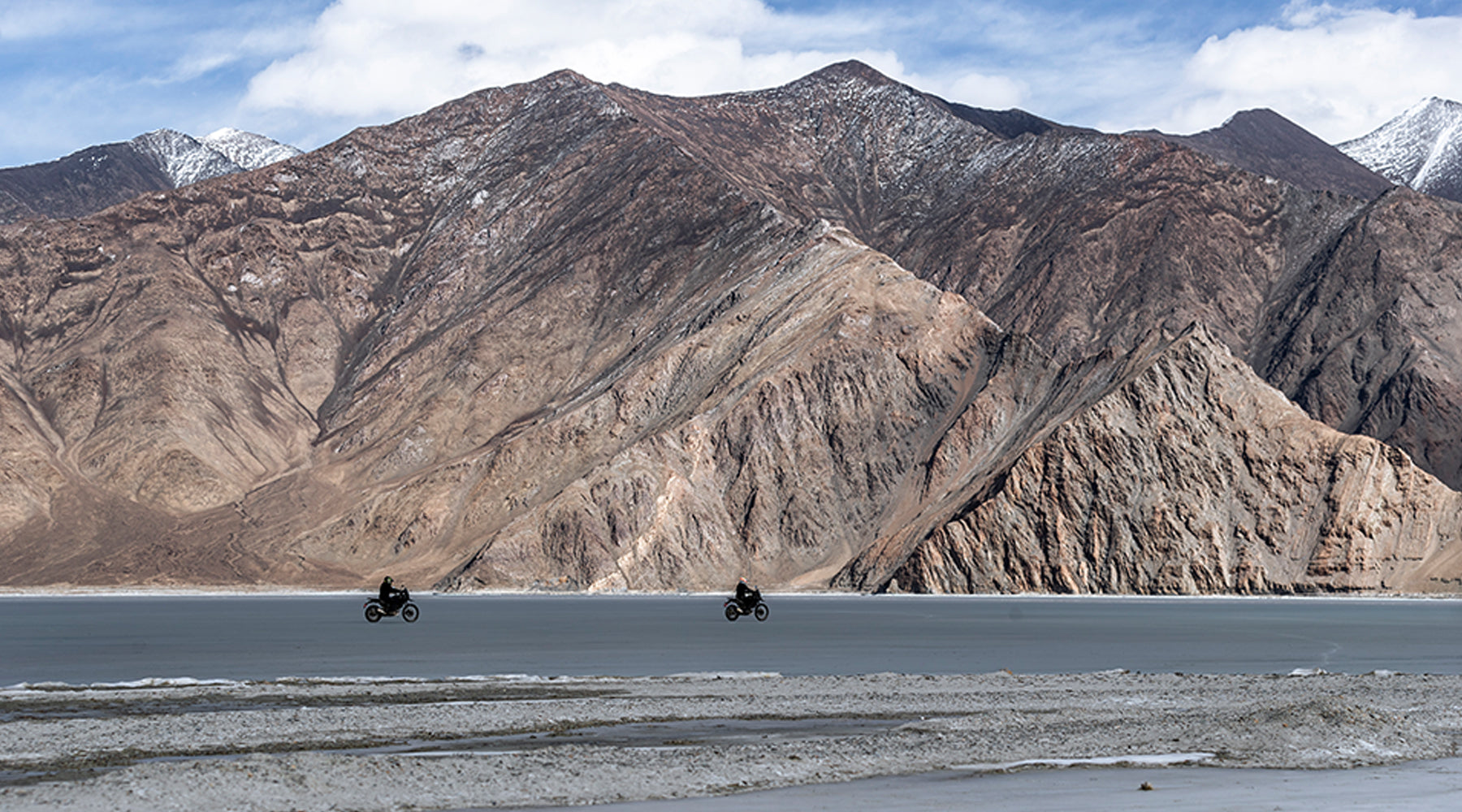
FOUND! The shipwreck of Ernest Shackleton’s ‘Quest’ is discovered in the Labrador Sea
SHACKLETON co-founder Martin Brooks reports from the ship at the centre of the Royal Canadian Geographical Society’s expedition, supported and equipped by Shackleton.
Six days into our expedition in the Labrador Sea between Canada and Greenland, a shout went up in the ship’s on-board laboratory. A shape, unlike any other seen on the ocean-floor 400m below, began to emerge on the sonar and etched its way slowly down the screens dotted about the vessel. Expedition leader John Geiger from the RCGS burst into the ship’s mess as five of us squinted at the shape. ‘Get David!’ - someone dived down below to find Director of Search David Mearns.
Mearns is arguably the world’s no1 shipwreck hunter, having located over 25 major shipwrecks and been awarded five Guinness World Records, including one for locating the deepest shipwreck ever found, the Rio Grande at 5,762 metres.

Sonar Image of Quest
The Shackleton Quest Expedition, led by the Royal Canadian Geographical Society (RCGS), had discovered the historic wreck of Quest, lying at a depth of 390m off the coast of Newfoundland and Labrador. The schooner-rigged vessel served as Sir Ernest Shackleton’s last expedition ship on the Shackleton-Rowett expedition of 1921/2. He died on board on January 5, 1922, aged 47.
The discovery of the shipwreck, in the 150th year after Shackleton’s birth, took place in the North West Atlantic using sonar equipment operated by experts from Memorial University’s Marine Institute, a leader in ocean research.
“I can definitively confirm that we have found the wreck of the Quest. She is intact. Data from high resolution side scan sonar imagery corresponds exactly with the known dimensions and structural features of this special ship. It is also consistent with events at the time of the sinking," said Mearns.
“Finding Quest is one of the final chapters in the extraordinary story of Sir Ernest Shackleton,” said Expedition Leader John Geiger, CEO of the Royal Canadian Geographical Society. “Shackleton was known for his courage and brilliance as a leader in crisis. The tragic irony is that his was the only death to take place on any of the ships under his direct command.”
The discovery was the result of painstaking work by the team which included Antoine Normandin as Mearns’ assistant and lead researcher. They researched historic logs and maps, and cross- referenced the historical data with modern technology to determine where the ship may have been located based on currents, weather conditions and other factors.

Quest Map
The discovery of Quest represents the last major part of the jigsaw in assembling Shackleton’s physical legacy. His granddaughter, and expedition co-patron, Hon. Alexandra Shackleton, said it was her “dream” to find Quest. Now, that dream has been realised in the year marking the 150th anniversary of Shackleton’s birth.
Ms. Shackleton pointed out that, “My grandfather, Sir Ernest Shackleton, had purchased Quest with the intention of leading a Canadian Arctic expedition. It is perhaps fitting that the ship should have ended its storied service in Canadian waters. I have long hoped for this day and am grateful to those who made this incredible discovery.”

Sir Ernest Shackleton waves to onlookers from the deck of Quest as the Shackleton-Rowett Expedition departs London on Sept. 17, 1921.
The Shackleton Rowett Expedition of 1922 on board Quest is acknowledged to be the final chapter in the so-called Heroic Age of Antarctic Exploration (1880-1922) - an era which saw polar titans Shackleton, Scott and Amundsen lead pioneering expeditions to the frozen continent in the name of science and discovery. The death of Shackleton on 5th January 1922 is often cited by historians as the dividing line between the "Heroic" and "Mechanical" ages of exploration.
Quest was originally built in Risør, Norway in 1917 as the wooden-hulled sealer Foca 1. She was renamed Quest by Lady Emily Shackleton. Shackleton died of a heart attack aboard Quest on January 5, 1922, while the ship was anchored off Grytviken, South Georgia. Shackleton was en-route towards Antarctica on the Shackleton-Rowett Expedition. He had been forced to abandon earlier plans to use Quest on a Canadian Arctic expedition after the Canadian government of Arthur Meighen withdrew its support. A British philanthropist, John Quiller Rowett, stepped in to fund the Antarctic expedition. Rowett’s grandson, Jan Chojecki, was also part of the 2024 Shackleton Quest Expedition team. Jan is the author of The Quest Chronicle, published in 2022, the first book centered on the Shackleton-Rowett Expedition in almost a century.
After Shackleton’s death, Quest was acquired by a Norwegian company, and was involved in a series of important expeditions, including the 1930-31 British Arctic Air Route Expedition led by British explorer Gino Watkins, who himself tragically died aged 25 while exploring Greenland. Quest was also used in Arctic rescues and served in the Royal Canadian Navy during the Second World War, before resuming work as a sealing ship. On 5th May 1962, Quest was damaged by ice and sank off the coast of Newfoundland and Labrador. All the Norwegian crew survived.

Quest Sinking

Quest Expedition Team
From top left: Geir Klover, Director Fram Museum; Derek Lee, Team Member; Jan Chojecki, Grandson of John Quiller Rowett and Author of Quest Chronicle; John Geiger, Expedition Leader and CEO, Royal Canadian Geographical Society; Tore Topp, Author, Son-in-Law of Quest’s Final Owner; Katherine Smalley, Team Member, Fellow of Royal Canadian Geographical Society; Mark Pathy, Team Member, Fellow of Royal Canadian Geographical Society; Craig Bulger, Project Engineer, Fisheries and Marine Institute, Memorial University of Newfoundland.
Front row from left: Sarah Walsh, Geomatics Specialist, Centre for Applied Ocean Technology, Memorial University of Newfoundland; Martin Brooks, Co-Founder, Shackleton.com; Antoine Normandin, Deputy Search Director; David Mearns, Search Director, Blue Water Recoveries Ltd.; Jill Heinerth, Explorer in Residence, Royal Canadian Geographical Society; Alexandra Pope, Editor in Chief, Canadian Geographic.


